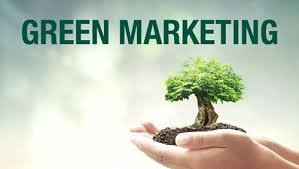
In 2025, sustainability is no longer a differentiator—it’s an expectation.
Consumers, especially Gen Z and Millennials, are increasingly eco-conscious. They’re making purchase decisions based on brand values, environmental impact, and ethical practices. As a result, brands are racing to promote their green initiatives. But here’s the catch: not all green claims are created equal.
Welcome to the battleground of authenticity vs greenwashing in green marketing.
In this blog, we’ll explore what green marketing looks like in 2025, why consumers are pushing back on inauthenticity, and how your brand can stand out—without sounding hollow or performative.
What Is Green Marketing in 2025?
Green marketing refers to the practice of promoting products, services, or brand values based on environmental benefits. In 2025, it goes beyond recyclable packaging or carbon offsets—it involves genuine, measurable commitments to sustainability, climate action, and ethical sourcing.
Examples of green marketing done right:
- Highlighting carbon-neutral production processes
- Transparent reporting of emissions and ESG goals
- Using circular economy models (recycling, reuse, resale)
- Partnering with verified environmental organizations
What Is Greenwashing?
Greenwashing is the practice of making misleading or exaggerated claims about a company’s environmental efforts in order to appear more sustainable than it actually is.
Common greenwashing tactics:
- Vague phrases like “eco-friendly” without supporting facts
- Using earthy imagery to imply greenness
- Highlighting one green initiative while ignoring broader harms
- Overstating impact with no third-party verification
In 2025, consumers and regulators are much quicker to spot and call out greenwashing, often causing more damage than doing nothing at all.
Why Authenticity Matters More Than Ever
- Consumers Are More Educated
- Shoppers are researching supply chains, reading sustainability reports, and fact-checking environmental claims.
- Brands that get caught greenwashing face backlash, lost trust, and public scrutiny.
- AI & Transparency Tools Are Empowering Buyers
- With tools like AI-powered product scanners, ethical shopping apps, and blockchain-based tracking, consumers can now verify sustainability claims instantly.
- Regulations Are Getting Stricter
- In the EU, Green Claims Directive laws are being enforced.
- In the U.S. and Canada, marketing watchdogs are cracking down on unverifiable green claims.
Bottom line:
🌱 Green marketing that lacks substance is a liability, not an advantage.
How to Practice Authentic Green Marketing in 2025
1. Be Transparent—and Show the Data
- Share your sustainability metrics openly: carbon footprint, water usage, waste reduction.
- Use infographics, dashboards, and annual impact reports.
- Admit where you’re falling short and explain how you’re improving.
Transparency builds trust—even if you’re not perfect yet.
2. Get Third-Party Certifications
Back your claims with independent verification:
- B Corp Certification
- Fair Trade
- Cradle to Cradle
- Forest Stewardship Council (FSC)
- Carbon Trust
These certifications signal credibility and commitment.
3. Avoid Vague Language
Instead of saying “eco-conscious” or “green,” explain:
- What materials are used
- How your processes reduce emissions
- Where your product lifecycle ends
Specificity = believability.
4. Embed Sustainability Into Your Business Model
Green marketing isn’t a campaign—it’s a culture. Leading brands are:
- Switching to renewable energy across operations
- Embracing zero-waste manufacturing
- Investing in circular product lines
Authentic sustainability touches every part of the business, not just the ad copy.
5. Involve Your Community
Let customers be part of the impact:
- Create product take-back programs
- Offer incentives for recycling or reusing
- Share user stories about sustainable lifestyle choices
People are more loyal to brands they can grow with, not just buy from.
Red Flags to Avoid in 2025
🚫 Using generic “green” visuals with no supporting info
🚫 Highlighting one eco-friendly product line while the rest is unsustainable
🚫 Hiding key details in the fine print
🚫 Failing to update your impact goals or metrics regularly
If it looks green but lacks substance, expect pushback.
Final Thought: Purpose Over PR
In 2025, authenticity is the new authority in green marketing. Consumers don’t expect perfection—but they do expect honesty, measurable action, and a shared sense of responsibility.
Brands that walk the talk will not only win hearts but also future-proof themselves against regulatory, reputational, and market risks.
TL;DR: Green Marketing in 2025
✅ Authenticity = specific, data-backed, third-party verified
✅ Greenwashing = vague, exaggerated, or performative claims
✅ Consumers & regulators are watching closely
✅ Transparency + consistency builds long-term brand trust
Are you ready to turn your sustainability story into a competitive advantage—without falling into the greenwashing trap? Let’s start with a transparent audit or strategy refresh.
Would you like a downloadable version of this blog, or a checklist version for internal brand teams? Just ask!
Ask ChatGPT
